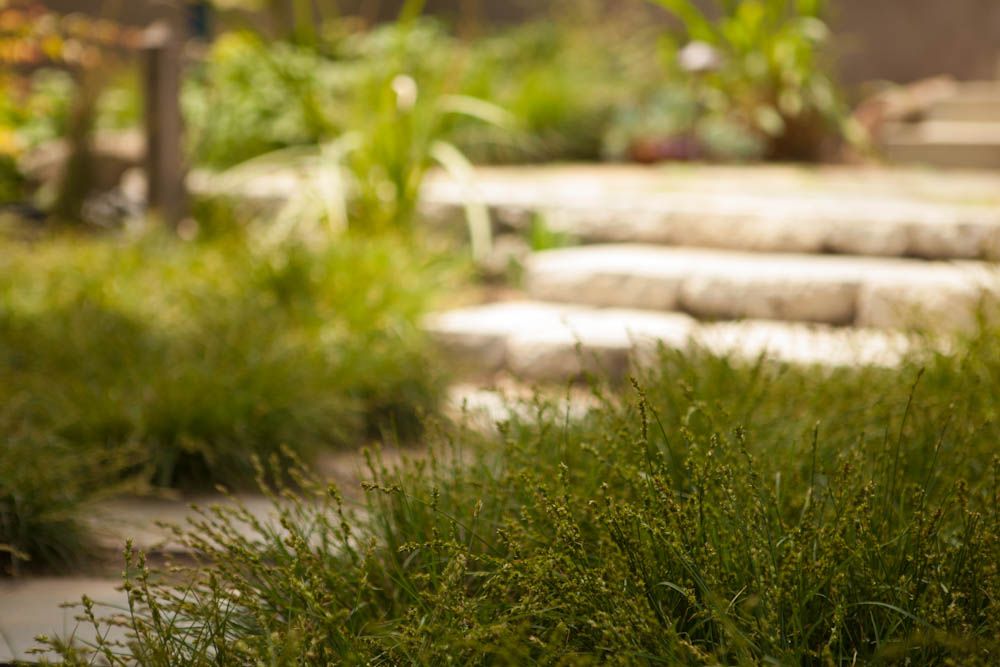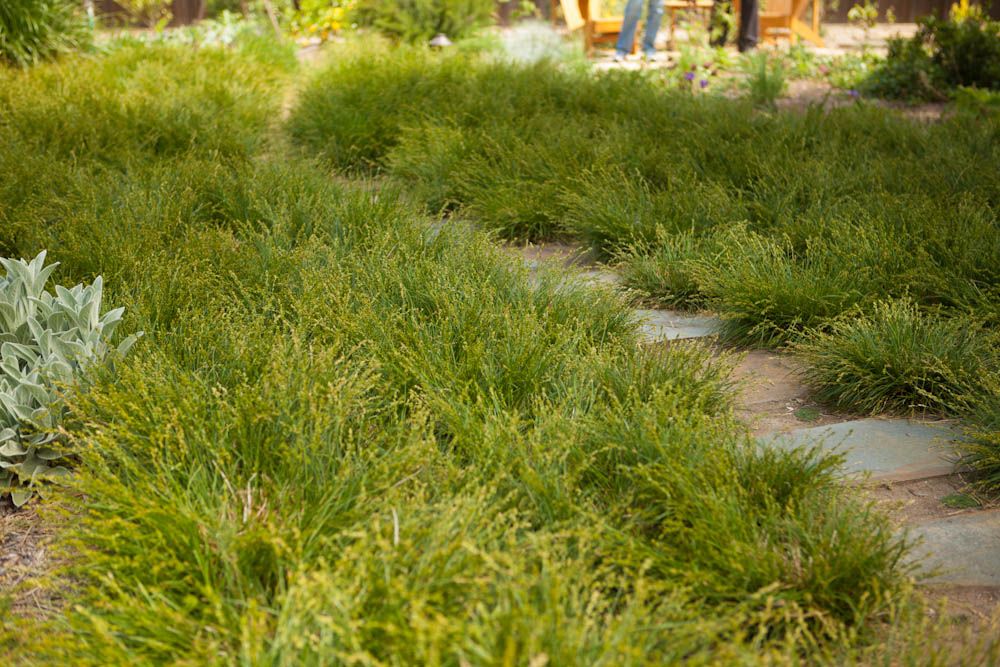“Somewhere out there in nature, he reasoned, there had to be a grass…that would be naturally low-growing, drought-tolerant, evergreen, and trampleable: a natural lawn grass.” – The New Yorker, August 19, 1996, “The Grassman.”
Carex pansa, the California meadow sedge, as seen in a garden on the recent Mar Vista garden tour, blanketing the backyard of a fairly large property. I’d never seen such an extensive planting of the California meadow sedge before. A pathway of stepping stones on a base of decomposed granite meandered through the sedge.

In The New Yorker article published August 19, 1996, entitled “The Grassman,” Wade Graham traces Greenlee’s early enthusiasm for outsized prairie grasses growing where manicured lawns once held sway, up to his epiphany:
“Eventually, it came to Greenlee: Americans have to have some sort of lawn…The botanist in him asked, If grasses can be big and floriferous, why can’t they also be the opposite: low, self-effacing, and well-behaved?”

John Greelee wrote back in December 2001 in “Sedge Lawns for Every Landscape” that “This native Pacific Coast sedge is hands-down one of the finest native sedges for making natural lawns. Largely untested in the East, it has proven durable in Texas and Colorado. Slowly creeping, dark green foliage grows 4 to 6 inches unmowed. California meadow sedge will tolerate varied types of soil conditions and temperatures, from sandy, exposed seacoasts to heavy clays and hot, inland valleys. It is also exceptionally traffic tolerant. Thriving in full sun to partial shade, it will thin out in deep shade. Mowing two to three times per year keeps the foliage low, tight, and lawnlike. Unmowed, it makes an attractive meadow and remains evergreen in all but the coldest climates. California meadow sedge is fast to establish from plugs planted 6 to 12 inches on center.”

The heck with some New Yorker guy–what did you think of it? Nice? Over-hyped? And sorry to be so practical, but how difficult did it appear to be in regards to picking dog crap out of it?
It definitely holds more visual interest than a traditional turf lawn.
Nice..I could see using it..and I bet the felines would vote positive.
Hoov, I have no personal experience, have never grown it, but only know as much as the photo shows, that it’s really beautiful used on a large scale this way. Granted, this is a new installation, but it has a sterling reputation. I put in a call to a garden designer (Dustin) and he confirmed its reputation. As far as dog crap, depends on what you feed your pups, I suppose! Seriously, any clumping grass/sedge is going to be more challenging than mown turf in that department.
Scott, as well as in a naturalistic setting like here, I could see it planted in a grid of geometric pavers too.
Kathy, good point, cats would love the mini savanna effect.
Sedge “lawns” are growing in popularity here in Austin too. I’m seeing Berkeley sedge and Texas sedge, both needing a good deal of shade to do well. I’ve fallen so hard for the look that I’m planning to rip out a large swath of lawn in my own front yard (I still have way too much–that is, any) and replace it with a Berkeley sedge lawn studded with ‘Margaritaville’ yuccas. Can’t wait!